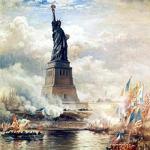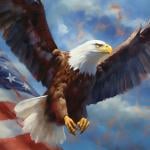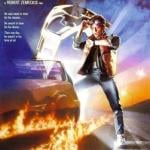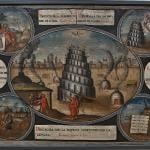ULTIMATE MARVEL TEAM-UP: RASKOLNIKOV AND WOLVERINE BATTLE GANDHI AND PHILIP MARLOWE! So someone writes a very silly column saying that superhero comics and movies alienate us from the possibility of our own heroism, and end up discouraging heroism rather than promoting it. NeilAlien has already growled at this silly column, but I’d like to point out a few scattered things I noticed about it, since there are implications for a broader theory of art and “realism” (what a misnomer! Is anything less “realistic” than real life?).
First, the article reminded me of two things: “Marvels” (see below) and a question The Rat was asked when she was applying for a prestigious fellowship in comparative literature. (She won the fellowship, too, because she’s supersmart. For a rat, anyway.)
At times, as I read “Marvels,” I wondered whether people would really react to the emergence of superheroes the way they react in the book. Are we really so insecure that we would feel threatened simply because others are more powerful than we are? Isn’t that just the same cliched adolescent appeal Ayn Rand’s worst passages have, the belief that everyone hates us because we are so cool and special, the belief that the world always tries to tear down those who merely want to Help and Save it? In the end, I was fully convinced that “Marvels” showed a pretty realistic reaction, in part because I recognized the invasion/liberation parallel I talk about below. But if I still needed proof that people really would throw bricks at superheroes, the Austin Chronicle column totally provides it. This guy is threatened not by real superheroes, but by comic books about made-up superheroes! For sure, he’d be less than thrilled if Captain America really did wing in and save his bacon.
The fellowship-question example is more important, though. Ratty was talking about how reading Dostoyevsky radically derailed her life. She ended up switching careers (she’d planned to go into advertising, but she couldn’t bring herself to push lemon-scented ennui freshener anymore), becoming pro-life, and undergoing a host of other unpleasant changes. She also became a vastly more serious reader of literature.
So one of her interviewers asks her something like, “So my question is–all those characters in Dostoyevsky, I can see they are extremely vivid figures, but people don’t really act like that in real life, do they?”
And I can see what he meant, sort of. I mean, I’ve never killed an old woman just to find out if God is dead. Similarly, I’ve never worried that my uncle killed my father because he wanted to marry my mother and become King of Denmark. Similarly, I’ve never found myself in a dark wood, about the middle point in my life, and been taken through the infernal, purgatorial, and celestial realms by various and sundry guides. You see where I’m going with this, no?
The specific situations and actions taken by characters are symbolic representations of actual crises faced by most people. Raskolnikov is like a floodlit, buoy-decked version of the rocks we all smash up on all the time. Yes, he’s more garish than we are. But that only means we’re less consistent than he is.
Art. Is. Not. Life. It is, when it is doing its job, a selection from life, a snapshot taken with an eye to framing and cropping. What is left out is as significant as what stays in. Art is a high-contrast, sometimes a solarized, photograph of life, not a random Kodak moment. Art uses a language of symbol, allusion, and archetype, in which every red is more crimson than it is in our daily lives, every tree is taller, every wind blows stronger. (Hey, here’s Peter David, an actual comics guy, saying the same thing!)
The search for a “realist” art is destined to fail, for two reasons: 1) The whole point of art–right? this is why you make art, rather than writing an article, or a diary entry, or a philosophy article?–is that it isn’t the same as random recording of sense-impressions and consciousness-belches.
2) There’s nowt as queer as folk. If you wrote a genuinely “realist” novel, nobody would accept it–“That’s not how things really happen!” Truth is stranger than fiction, because truth is more ragged, and there’s just much more of it, so eventually, like the infinite monkeys at infinite typewriters, almost every random thing happens. The whole point of art is to sift the meaningful monkey-typing from the random clatter of the keys. So art that attempts to hold the mirror up to nature is actually abdicating on its basic responsibility, which is to show not what nature shows (nature does that!), but what nature means.
So there are two basic mistakes–no, wait! three–at the core of the Chronicle article.
1) The lamest one. What’n Ah say what’n is going on with this guy’s notion of heroism? I mean, obviously I’m never going to be Philip Marlowe. Duh. Equally obviously, Chandler’s description of his hero is stuffed with more bombast than Jenifer Aniston playing Falstaff. (Ick. Scratch that.) I’ll defend the “Down these mean streets a man must go…” line any day, since I think it pays for its sentimentality by being genuinely insightful; but do we really have to jam every hero into the “Casablanca” mold?
2) Dude’s wrong about superhero comics–and even superhero movies. They just don’t do what he thinks they do. They do not show invulnerable, infallible beings saving everybody and never dealing with the consequences of heroism. I mean, for pity’s sake, just read one, can’t you? “Riot at Xavier’s”? “Alias”? “Arkham Asylum” (not one of my favorites, but whatever)? “Batman Meets Houdini” for pete’s sake??? Or watch one of the durned movies. Yes, the scene where Nightcrawler tore up the White House was totally thrilling. But check it out: That scene would not have been nearly as powerful without the shots of the President, with his aides’ hands on his shoulders, clearly fearing for his life; nor would the movie as a whole have meant anything without the scenes showing its “superheroes” as flawed, struggling critters not so unlike ourselves.
Why does this guy think Rogue can’t kiss people? Is it just random, or is it, like, somehow related to, you know, ordinary American adolescence? Is the scene in the first “X-Men” movie where Cyclops inadvertently blasts a hole through Grand Central Station just a SFX flashbangshow, or are we seeing something about self-control and (this is brought out in later dialogue) the way we can feel ashamed even of our most powerful qualities? And these are just within the movie versions, not exactly the places I’d turn for in-depth examination of character.
3) And finally, dude’s wrong about what art does. By removing us from our everyday and personal concerns, it gives us a degree of distance we need to come to surprising and challenging new conclusions. And it seeks to find the metaphors that express our condition and dilemmas. Art is a result of the fact that we know we aren’t what we should be. So we try to come up with some way of expressing the shadow that falls between the meaning of life and the jumbled, chaotic experience of it. (Even if the meaning is chaotic, that’s still something that needs to be clarified for us, because it isn’t obvious.)
So yeah, if you’re cool with Raskolnikov you can’t object to Charles Xavier on realist grounds.











